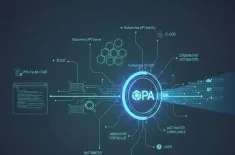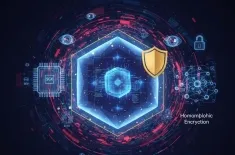Explore Quantum commercialization's path, from NISQ to fault tolerance
The journey of quantum computing from the rarefied, ultra-cold confines of the research laboratory to scalable, reliable commercial application is one of the most complex technological challenges of the 21st century. It is a transition driven by both exhilarating scientific breakthroughs and profound engineering hurdles. The ultimate goal—the seamless and widespread **Quantum commercialization** of computational power that exponentially surpasses classical limits—hinges on overcoming a trinity of technical barriers: achieving robust **qubit stability**, implementing effective **error correction (QEC)**, and reaching the critical threshold for **quantum advantage**. This content delves into the practical challenges and investment trends defining this high-stakes, multi-decade race towards the era of fault-tolerant quantum computation.
The Technical Crucible: From NISQ to Fault Tolerance
The current era of quantum hardware is often described as the **Noisy Intermediate-Scale Quantum (NISQ)** era. **NISQ** machines, typically having 50 to a few hundred physical qubits, represent the first generation of commercially available quantum processors. While they are groundbreaking engineering marvels capable of running complex algorithms for specific tasks, their inherent noise and lack of full error correction severely limit the depth and reliability of computations.
The Critical Challenge of Qubit Stability
The fundamental building block of a quantum computer is the qubit, which harnesses superposition and entanglement. However, this quantum nature is exquisitely fragile. The foremost technical challenge is ensuring **qubit stability** by fighting decoherence—the loss of the quantum state due to environmental interference like stray electromagnetic radiation, thermal fluctuations, or even minute vibrations.
Coherence Time: The time a qubit can reliably hold its quantum state is a primary metric of hardware performance. Various modalities, such as superconducting circuits (requiring millikelvin temperatures near absolute zero), trapped ions, and photonic systems, are in fierce competition, each offering different trade-offs between coherence time, fidelity, and connectivity. Trapped-ion systems, for instance, often boast coherence times measured in minutes, vastly outperforming other types, though scaling their architecture presents its own challenge.
The Physical Environment: The hardware demands are immense, requiring highly specialized infrastructure. Cryogenic cooling systems, complex vacuum chambers, and extremely precise control electronics are necessary to isolate the qubits. This engineering complexity drives up the cost and restricts current systems to controlled cloud-access environments rather than on-premise deployment for most businesses.
The Imperative of Error Correction (QEC)
Because every single operation on a **NISQ** device is prone to error, the development of reliable **error correction (QEC)** is widely regarded as the most critical technological hurdle to achieving universal, fault-tolerant quantum computing.
Unlike classical bits, which can be protected by simple redundancy (e.g., repeating a bit three times), quantum information cannot be directly copied (due to the no-cloning theorem). **QEC** must encode a single, logical qubit onto a large ensemble of highly-connected physical qubits. These extra physical qubits, known as ancilla qubits, are used solely to detect and correct errors without destroying the delicate quantum information.
The Overhead Problem: The ratio of physical qubits to logical (error-corrected) qubits is currently massive, often requiring hundreds or even thousands of noisy physical qubits to create just one reliable logical qubit. Recent breakthroughs by leaders like IBM and Google, demonstrating error suppression or even reaching the "break-even point" where logical errors decrease with increased physical qubits, mark significant milestones. However, the requirement for millions of physical qubits to create the 1,000 to 100,000 logical qubits necessary for a practical, large-scale machine highlights the severity of the **QEC** overhead challenge.
From Advantage to Commercial Reality
The commercialization pathway is directly tied to the concept of **quantum advantage**, also sometimes referred to as quantum utility.
Defining Quantum Advantage
**Quantum advantage** is achieved when a quantum computer can solve a practical, commercially relevant problem measurably faster or more cost-effectively than the best known classical supercomputer. This goes beyond the theoretical concept of quantum supremacy, which only required demonstrating that a quantum machine could perform any task a classical machine practically couldn't, even if that task was abstract or non-commercial (e.g., Google’s 2019 demonstration).
Early Applications: Industries like finance (portfolio optimization, risk modeling), pharmaceuticals (molecular simulation for drug discovery), and materials science (novel catalyst design) are the first adopters because the computational complexity of their problems is an ideal match for early quantum capabilities. Documented cases of quantum-classical hybrid systems delivering modest, verifiable speedups in real-world scenarios, such as medical device simulations or complex correlator algorithms, are fueling early enterprise adoption and investment.
Software and Workforce: Achieving **quantum advantage** requires not just hardware, but a mature software ecosystem. Developing high-level quantum programming languages, compilers, and a quantum-aware workforce capable of writing optimized, problem-specific algorithms remains a key bottleneck. The complexity of translating a classical business problem into an effective quantum circuit requires highly specialized talent.
Investment Trends and the Quantum Economy
The global transition toward **Quantum commercialization** is being catalyzed by a torrent of public and private investment, reflecting a widely held belief in the technology’s transformative, multi-trillion-dollar potential.
Surging Venture Capital and Government Funding
The global quantum technology market is experiencing exponential growth, with market projections reaching into the tens of billions of dollars by the early 2030s.
Venture Capital Momentum: Venture capital (VC) funding in quantum startups has surged dramatically, with annual investments often exceeding $2 billion globally in recent years. This funding has shifted from purely academic research to more mature, late-stage startups focused on hardware scaling, software development, and specialized industry applications. This indicates increasing investor confidence that the technology is shifting from pure R&D to a phase of potential monetization. A notable trend is the move toward public-private co-funding arrangements, especially for high-cost hardware development.
The Geopolitical Race: Government funding remains the backbone of the quantum ecosystem. Initiatives like the U.S. National Quantum Initiative, Europe’s Quantum Flagship, and China's massive, multi-billion-dollar state-backed programs are driving a geopolitical race for quantum leadership. This public funding is largely focused on overcoming fundamental physics challenges, developing national quantum infrastructure, and securing a supply chain for quantum-safe cryptography (Post-Quantum Cryptography).
Investment Focus: Hardware to Software Shift
Current investment is heavily focused on three core areas, often moving in a cyclical pattern:
- Fault-Tolerant Hardware Roadmaps: Major companies like IBM and Quantinuum have published ambitious roadmaps targeting the delivery of fault-tolerant quantum computers with hundreds of logical qubits by the end of the decade. Investment is pouring into optimizing various qubit modalities (superconducting, trapped ion, photonic, silicon, and topological) to achieve higher fidelity and lower **QEC** overhead.
- Quantum Software and Algorithm Development: As hardware improves, a greater share of investment is flowing into software. This includes developing user-friendly programming tools, establishing industry-specific algorithm libraries (e.g., for optimizing logistics or molecular simulation), and creating Quantum-Classical Hybrid Systems that maximize the utility of the limited **NISQ** capabilities by offloading most work to classical systems.
- Quantum Cloud Services: Cloud platforms (Amazon Braket, IBM Quantum, Microsoft Azure Quantum) are democratizing access. They eliminate the need for costly on-premise hardware, allowing small companies and academic researchers to run pilot projects. The rapid commercial traction of these pay-per-use services is a significant indicator of the shift toward a genuine market.
Practical and Systemic Challenges to Widespread Adoption
Moving beyond a handful of early-adopter industries to truly widespread, general-purpose commercial deployment involves significant non-technical hurdles.
Talent and Education Shortages
The most pervasive non-technical challenge is the severe global shortage of the interdisciplinary talent required to advance the field. Quantum computing sits at the nexus of quantum physics, computer science, and engineering. The workforce needs include:
- Quantum Engineers (hardware design and operation).
- Quantum Algorithm Developers (translating business problems).
- Quantum-Aware Business Leaders (identifying and prioritizing commercially viable use cases).
Without a sufficient talent pipeline, the high cost of expertise and the slow pace of application development will continue to be a major commercialization barrier.
High Costs and Accessibility
Quantum computers are inherently expensive to build, maintain, and operate. The highly specialized components, the need for extreme environments (like specialized cryogenic cooling), and the high personnel costs mean that the total cost of ownership is prohibitive for all but the largest tech giants and governments. While cloud access mitigates some of this, the cost to run large-scale computations remains significant.
Security and Standards
The potential of future fault-tolerant quantum computers to break existing public-key cryptography (specifically RSA and ECC) is a dual-edged sword. This threat drives massive government investment in Post-Quantum Cryptography (PQC)—new classical algorithms designed to be quantum-resistant. However, the migration to PQC standards is a massive global effort that must precede the arrival of large-scale, fault-tolerant machines to avoid a catastrophic security vulnerability, thus creating an urgent driver for the entire sector.
The Quantum Roadmap: From NISQ to Utility
The path to **Quantum commercialization** is structured around a phased technical roadmap, focused on steadily improving the reliability of the qubit:
- NISQ Era (Current): Focused on small-scale proofs-of-concept and specialized optimization/simulation problems using limited, noisy qubits. Success is measured by algorithmic breakthroughs and error mitigation techniques.
- Error-Corrected / Fault-Tolerant Era (Mid-Future): Focused on reaching the **QEC** break-even point and scaling to hundreds of logical qubits. This stage will unlock the true, exponential **quantum advantage** for major industrial problems, ushering in the first genuine era of **Quantum commercialization** where reliable computation is possible.
- Universal Quantum Computing (Long-Term): Achieving thousands of logical qubits with low error rates, enabling the development of general-purpose quantum computers capable of tackling virtually any problem currently considered intractable.
The current trend in both research and investment—the pivot from simply increasing the number of physical qubits toward drastically improving their quality and implementing low-overhead **error correction (QEC)**—signals that the entire industry is prioritizing **qubit stability** and reliability as the direct route to commercial, fault-tolerant applications.

































